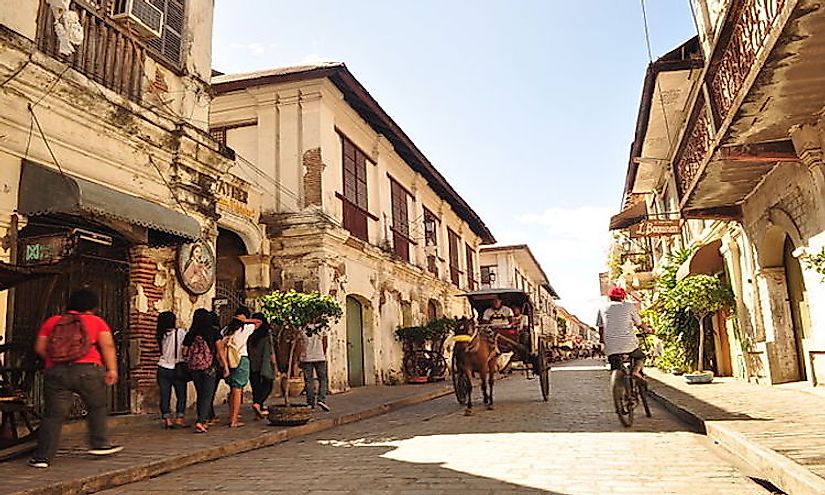UNESCO World Heritage Sites In The Philippines

The Philippines is an island country located in the Pacific Ocean in the southeastern parts of Asia. The capital of the country is in Manila while Quezon City is the largest city. Filipino and English are the official languages, but there are also 19 other recognized regional languages. It is a unitary presidential state that was colonized by Spain. The Philippines is an archipelago of about 7,500 islands and thus has very many beaches which attract tourists. There are other attractions including some of which have been inscribed on the UNESCO World Heritage list.
UNESCO World Heritage Sites In The Philippines
Historic City Of Vigan
The historic city of Vigan was established in the 16th-century before the Spaniards who colonized the country arrived. It is one of the few Hispanic cities left in the country which still has its structures intact. The name Vigan translated means beautiful shore and came from early Chinese settlers. There are currently a large number of Chinese families in the city with most of them having adopted Hispanic names. After Spain had taken over the control of Philippines, they conquered the city until the Philippine Revolution where revolutionary forces attacked and defeated the Spanish colonial forces and took over Vigan. In 99, during the Philippine-American war, the US troops captured the city. In 1945 during the World War II, the city was invaded by Japan, but a combined effort of the Philippine and American troops liberates the City from the Japanese in the following year.
Rice Terraces Of The Philippine Cordilleras
The rice terraces were inscribed in 1995 making them the first property to find itself on the list. It has included five sites namely; Magadan Rice terraces, Hungduan Rice Terraces, Mayoyao Rice Terraces, Banaue Rice terraces, and Bangaan Rice Terraces. These are one of few monuments in the country which do not exhibit any form of colonial influence. They spread over an area of five present provinces. The terracing farming in the Philippines started in the area about one thousand years ago with taro being the dominant crop. Over the years, it was replaced by rice which is now mostly grown.
Tubbataha Reefs Natural Park
Tubbataha Reefs Natural Park is a protected area found in the middle of Sulu Sea. It covers an area o 375.6 square miles, 150 kilometers from Puerto Princesa City. The area consists of two coral reefs with vertical walls reaching the depths of over 300 feet and is as a result of underwater volcanic activities. The location of the site is remote and disturbed with a rich biodiversity of flora and fauna. Some large ocean fauna found in the area include, tiger sharks, cetaceans, turtles, barracuda, and trevallies.
Preservation Efforts, And Environmental And Cultural Significance
The Historic city of Vigan city is unique for its architecture which is a conglomeration of the cultural elements of cultural elements and values from Philippines, Spain, and China.The Rice terraces of the Philippine Cordilleras is famous for blending of the physical, socio-cultural, economic, religious and political environment that make the area a living cultural landscape which has earned the site a space on the UNESCO list. The Tubbataha Reef Natural Park is protected by the government and international laws due to its significance globally in 2005, a ship by the name Rainbow Warrior ran aground damaging around 1,100 square feet and was fined $7,000. The other ship run aground was the USS Guardian in 2013 which destroyed 25,248.6 square feet and was fined $ 1.97 million. The incident led to some US Navy officers dismissal for failing to adhere to the standard US Navy navigation procedures.
UNESCO World Heritage Sites In The Philippines
| UNESCO World Heritage Sites in the Phillipines | Year of Inscription; Type |
| Baroque Churches of the Philippines | 1993; Cultural |
| Historic City of Vigan | 1999; Cultural |
| Mount Hamiguitan Range Wildlife Sanctuary | 2014; Natural |
| Puerto-Princesa Subterranean River National Park | 1999; Natural |
| Rice Terraces of the Philippine Cordilleras | 1995; Cultural |
| Tubbataha Reefs Natural Park | 1993; Natural |







